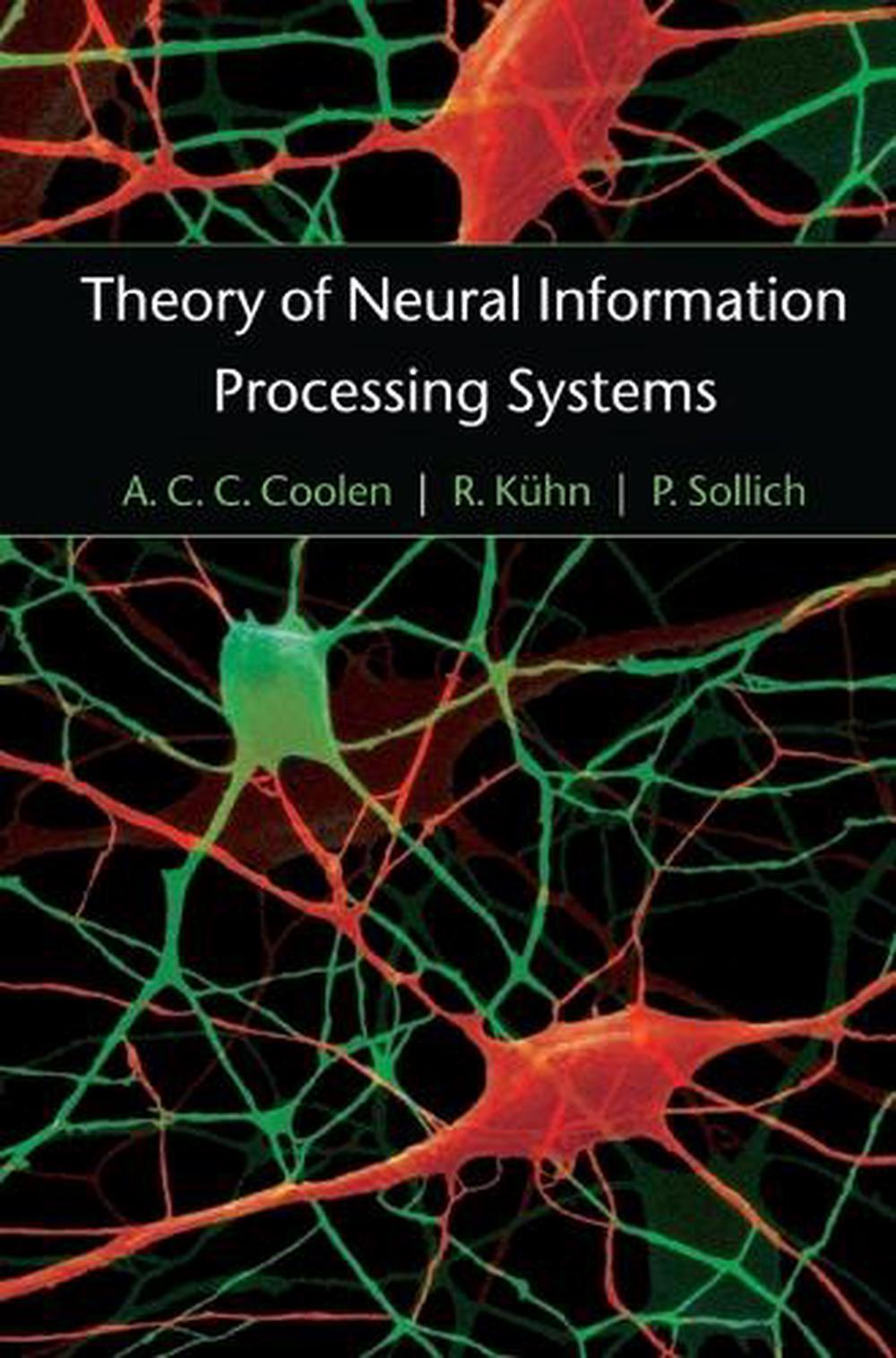
When you click on links to various merchants on this site and make a purchase, this can result in this site earning a commission. Affiliate programs and affiliations include, but are not limited to, the eBay Partner Network.
Theory of neural information processing systems by P. Sollich (English) Hardcove

- Item No : 388170772104
- Condition : Brand New
- Brand : No brand Info
- Seller : the_nile_uk_store
- Current Bid : US $157.91
-
* Item Description
-
The Nile on eBay

Theory of neural information processing systems
by P. Sollich, A.C.C. Coolen, R. Kuehn
Provides an account of the modern theory of neural information processing systems. This book includes mathematical details and appendices provide further background material, including probability theory, linear algebra and stochastic processes. It is intended for graduate students from quantitative disciplines.
FORMAT
HardcoverLANGUAGE
EnglishCONDITION
Brand New
Publisher Description
Theory of Neural Information Processing Systems provides an explicit, coherent, and up-to-date account of the modern theory of neural information processing systems. It has been carefully developed for graduate students from any quantitative dsicipline, including mathematics, computer science, physics, engineering or biology, and has been thoroughly class-tested by the authors over a period of some 8 years. Exercises are presented throughout the text and notes onhistorical background and further reading guide the student into the literature. All mathematical details are included and appendices provide further background material, including probability theory,linear algebra and stochastic processes, making this textbook accessible to a wide audience.
Author Biography
A.C.C. Coolen is at Professor of Applied Mathematics, Department of Mathematics, King's College, London. R. Kuehn is at Lecturer in Applied Mathematics, Department of Mathematics, King's College, London.
Table of Contents
I Introduction to Neural Networks1: General introduction2: Layered networks3: Recurrent networks with binary neuronsII Advanced Neural Networks4: Competitive unsupervised learning processes5: Bayesian techniques in supervised learning6: Gaussian processes7: Support vector machines for binary classificationIII Information Theory and Neural Networks8: Measuring information9: Identification of entropy as an information measure10: Building blocks of Shannon's information theory11: Information theory and statistical inference12: Applications to neural networksIV Macroscopic Analysis of Dynamics13: Network operation: macroscopic dynamics14: Dynamics of online learning in binary perceptrons15: Dynamics of online gradient descent learningV Equilibrium Statistical Mechanics of Neural Networks16: Basics of equilibrium statistical mechanics17: Network operation: equilibrium analysis18: Gardner theory of task realizabilityAppendicesA: Historical and bibliographical notesB: Probability theory in a nutshellC: Conditions for central limit theorem to applyD: Some simple summation identitiesE: Gaussian integrals and probability distributionsF: Matrix identitiesG: The delta-distributionH: Inequalities based on convexityI: Metrics for parametrized probability distributionsJ: Saddle-point integrationReferences
Review
The book provides an excellent class-tested material for graduate courses in artificial neural networks. It is completely self-contained and includes also a thorough introduction to the discussed discipline-specific areas of mathematics. EMS Newsletter Therefore, this book represents a good reference source of applicable ideas for a wide audience including students, researchers and application specialists as well. EMS Newsletter
Long Description
Theory of Neural Information Processing Systems provides an explicit, coherent, and up-to-date account of the modern theory of neural information processing systems. It has been carefully developed for graduate students from any quantitative dsicipline, including mathematics, computer science, physics, engineering or biology, and has been thoroughly class-tested by the authors over a period of some 8 years. Exercises are presented throughout the text and notes on
historical background and further reading guide the student into the literature. All mathematical details are included and appendices provide further background material, including probability theory, linear algebra and stochastic processes, making this textbook accessible to a wide audience.Review Quote
The book provides an excellent class-tested material for graduate courses in artificial neural networks. It is completely self-contained and includes also thorough introduction to the discussed discipline-specific areas of mathematics...Therefore, this book represents a good reference source of applicable ideas for a wide audience including students, researchers and application specialists as well.
Feature
Interdisciplinary comprehensive text aimed at physicists, mathematicians, and computer scientists
Contains multiple exercises on each topic
Mathematically rigorous
Highlights latest research and future work in neural networksDetails
ISBN0198530234Author R. KuehnPages 586Publisher Oxford University PressYear 2005ISBN-10 0198530234ISBN-13 9780198530237Format HardcoverImprint Oxford University PressPlace of Publication OxfordCountry of Publication United KingdomLanguage EnglishMedia BookUK Release Date 2005-07-28Publication Date 2005-07-28NZ Release Date 2005-07-28Illustrations numerous figuresAU Release Date 2005-07-31Alternative 9780198530244Audience Tertiary & Higher EducationDEWEY 006.32


-
- The Lost Super Foods
- $ 37.00
- The Self-Sufficient Backyard
- $ 37.00
- A Navy Seals BUG IN GUIDE
- $ 39.00
- Childrens Books Phonics Lot 60
- $ 34.99
















